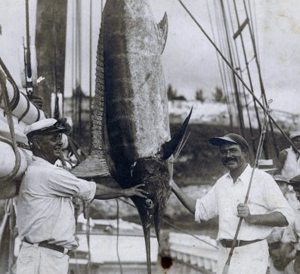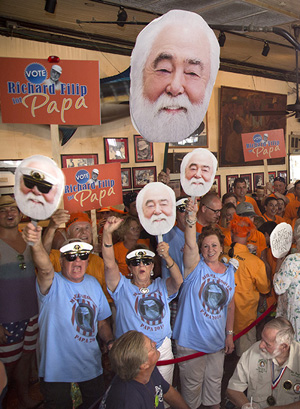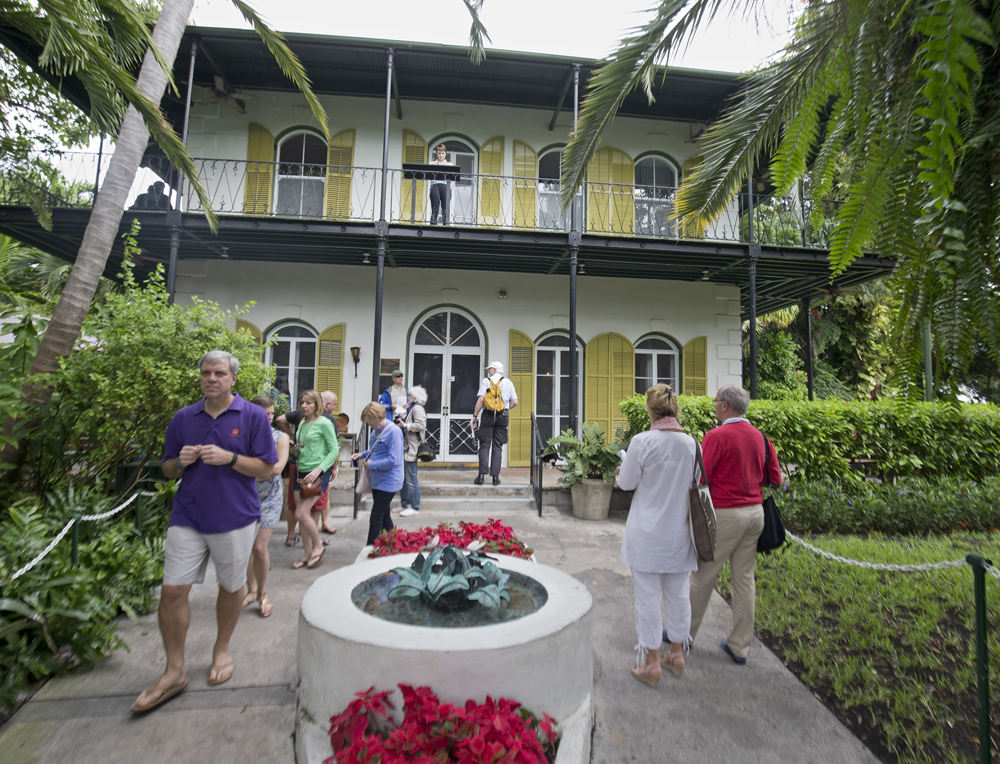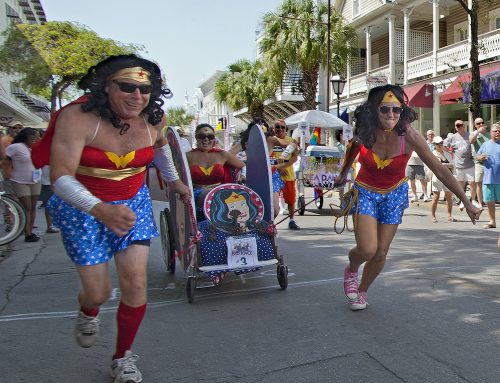If not for the tardy delivery of a car, Ernest Hemingway’s 10-year love affair with Key West might never have happened.
Key West was supposed to be just a stopping-off point for Hemingway when he arrived on the ferry from Havana in 1928. But the Ford car that should have been waiting at the docks was delayed, so the embarrassed car dealer offered the author accommodations at the Trevor and Morris Apartments above the dealership.

Ernest Hemingway (right) was a passionate angler during his Key West years. (Photo courtesy of the Key West Art & Historical Society)
During his stay there, Hemingway worked on “A Farewell to Arms” and became captivated by the island’s easygoing ambiance. What he discovered fed his exuberance for living, launched the most prolific period of his career and inspired him to use Depression-era Key West as the setting for “To Have and Have Not” — his only novel set in the United States.
In a short time, Hemingway moved into a Spanish colonial villa at 907 Whitehead St., which was his home through December 1939. Now a registered National Historic Landmark, the home is a museum honoring the author who established Key West as a literary haven.
Ernest Hemingway wrote many of his best-known works in the second-story writing studio next to the house. Among them were “Death in the Afternoon,” “For Whom the Bell Tolls,” “The Snows of Kilimanjaro” and “The Short Happy Life of Francis Macomber.” Following his death in 1961, the unpublished manuscript that would become “Islands in the Stream” was found in a vault in the property’s garage.
Behind the house shimmers the turquoise water of Key West’s first swimming pool. Hemingway’s second wife, Pauline, had it built while her husband was away covering the Spanish Civil War. When he discovered the pool had cost $20,000, Hemingway took a penny from his pocket and angrily tossed it to the ground, saying she had spent nearly his last cent. Pauline had the penny imbedded in cement beside the pool, where visitors still can see it today.
Guided tours of the Hemingway home are offered daily. Visitors can view the author’s writing studio, explore the grounds and make friends with the property’s clan of six-toed cats — descended, so the story goes, from a sea captain’s feline given to Hemingway.

Once a regular hangout for Ernest Hemingway, Sloppy Joe’s Bar draws stocky bearded men and their supporters each July for the famed Hemingway® Look-Alike Contest. (Photo by Rob O’Neal, Florida Keys News Bureau)
As well as the Whitehead Street home, many other Key West sites also recall the author’s presence and pastimes.
One of the most famous is Sloppy Joe’s Bar at 201 Duval St. Originally opened at 428 Greene St. (now the home of Captain Tony’s Saloon), Sloppy Joe’s was owned by Hemingway’s buddy and fishing companion Joe Russell. Hemingway and Russell became friends when Russell cashed a royalty check that the local bank had refused. A charter-boat captain and speakeasy operator, Russell eventually became the model for Freddy in “To Have and Have Not.”
The author called himself a “silent partner” in Sloppy Joe’s and made it a regular hangout. There he drank with his “Mob” of literary lights and local cohorts, even after the bar was furtively moved to its Duval Street location following a rent dispute between Russell and his landlord.
Hemingway met Martha Gellhorn (who later became his third wife) at Sloppy Joe’s — and a number of his belongings, including uncashed royalty checks and sections of the original manuscript of “To Have and Have Not,” were found stored there after his death.
One of Hemingway’s sporting pursuits was refereeing boxing matches. The one-time Key West Arena, at the corner of Thomas and Petronia streets in Bahama Village, hosted many of those open-air fights. These days, the popular Blue Heaven Restaurant welcomes diners and Hemingway buffs at the former arena site.
The apartment/car dealership complex where Hemingway first lived, located at 314 Simonton St., is now known as Casa Antigua — a private home and headquarters for a small business.
When Ernest Hemingway left Key West in 1939, his literary reputation and his larger-than-life persona were securely established. And on the island he loved, he left a legacy that remains vibrant today.
That legacy is saluted each summer during the Hemingway Days celebration — scheduled July 17-22 this year. From the lively Hemingway® Look-Alike Contest at Sloppy Joe’s to events featuring contemporary authors, it’s a fitting tribute to Key West’s most famous literary son.





